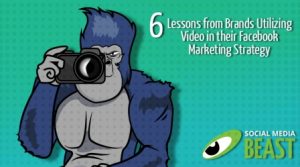— November 2, 2017

hesalzmanngmailcom / Pixabay
With over a million copies sold, Geoffrey Moore’s “Crossing the Chasm” guide to marketing and selling disruptive products to mainstream customers is still one of the must-read books for B2B-focused sales and marketing leaders.
One of Inc. magazine’s Top 10 Marketing Books of All Time, its core principles are still enduringly relevant, more than 20 years after its first publication. Now in its third edition, it has of course been regularly revised to reflect the realities of modern high-tech marketing.
For me, the core of the book has always been its simple but effective framework for establishing a compelling and clearly differentiated value proposition, and I’d like to share some of the lessons I’ve learned in reinterpreting Moore’s format for a contemporary audience…
Here’s Moore’s original 6-step value proposition formula:
- For (target customer)
- Who (statement of need or opportunity)
- The (product name) is a (product category)
- That (statement of key benefit – that is, compelling reason to buy)
- Unlike (primary competitive alternative)
- Our product (statement of primary differentiation)
It has a simple, elegance, doesn’t it? This framework must have been used to position and launch thousands of successful new disruptive products and solutions. But in applying the formula in a series of recent positioning projects with clients, I’ve found that a few simple redefinitions and extensions can make it an even more powerful and effective tool.
Here are my changes:
- For (targeted roles) in (targeted organisations)
- Who are seeking to (targeted issues)
- But are struggling with (typical constraints)
- (Solution name) is a (category)
- That (compelling reason to act)
- Unlike (key alternative options)
- We (our unique differentiators)
Allow me to break down these changes and explain my rationale in a little more detail:
For (targeted roles) in (targeted organisations)
I’ve found that the best way of accurately describing target customers is through a combination of targeted roles and targeted organizations. The targeted roles are the business problem owners that we can expect to be most concerned about the business issues we have chosen to target – these may include a number of related job titles.
The targeted organizations are the ones that align with our Ideal Customer Profile. Without a clear understanding of both the roles and job title we are targeting and the characteristics of our ideal target organizations, it will always be harder than it ought to be to either position what we do or to conduct effective outreach campaigns.
Who are seeking to (targeted critical issues)
It’s equally important to be clear about the specific business issues we have chosen to address. These targeted issues can either be problems that our prospective customer needs to solve or opportunities that our prospective customer feels that they have to achieve.
Whether these issues may already be obvious to the prospective customer, or whether we have to draw their attention to them through our actions, the common factor is that once recognized, the issues are significant enough to force the customer to take action.
But are struggling with (typical constraints)
This element was missing in Moore’s original formula, but I’ve found it to be critically important in shaping a compelling value proposition. Even once they have recognized a critical issue, many prospective customers will be held back by some form of constraint.
These constraints might, for example, take the form of skills deficiencies, incompatible systems or inadequate budgets and by identifying them, we can work out how we can take steps to help them eliminate them.
(Solution name) is a (category)
Moore’s original formula talked about “products” – but we live in a world where our solutions to the customer’s issues could take the form of products, services or a combination of the two. Most importantly, our solutions need to fall into a recognizable category.
This was a critical and often ignored element of Moore’s framework – if our prospect customers are to be able to easily comprehend what we do, they must be able to relate our solution to a category that they are already familiar with.
That (compelling reason to act)
This is another area where I’ve reinterpreted Moore’s original approach. He referred to a “statement of key benefit/compelling reason to buy” and many have taken this to mean the reason for choosing our product or service – but we can and will deal with this later.
I’ve found it more helpful to try and identify why our prospective customer should decide to do anything at all. In a world where the most common outcome of a buying process is now a decision to do nothing and stick with the status quo, it’s incredibly important that we identify what the prospective customer’s compelling reason to act is – whether they end up buying from us or a competitor.
Unlike (key alternative options)
Many people had a narrow interpretation of what Moore described as the “primary competitive alternative”, assuming it to mean only their most obvious direct competitors. But I’ve found it much more useful to broaden this focus to include all the alternative ways of addressing the targeted issue.
Your strongest competition may not come from the most obvious competitive vendors – it may come from radically different ways of confronting the problem or opportunity. Artificially restricting your perspective in this area could blindside you to who your real challenges are!
We (our unique differentiators)
Finally, I wrap up the positioning statement in broadly the same way that Moore originally intended – by focusing on our unique differentiators. But I’ve also learned that a handful of powerful differentiators are far more powerful (and way more memorable) than a laundry-list of everything that is different about you.
Keep it simple. Never forget that people remember (and respond) to short and simple themes, and not to lengthy or complicated lists.
Business & Finance Articles on Business 2 Community
(73)
Report Post








